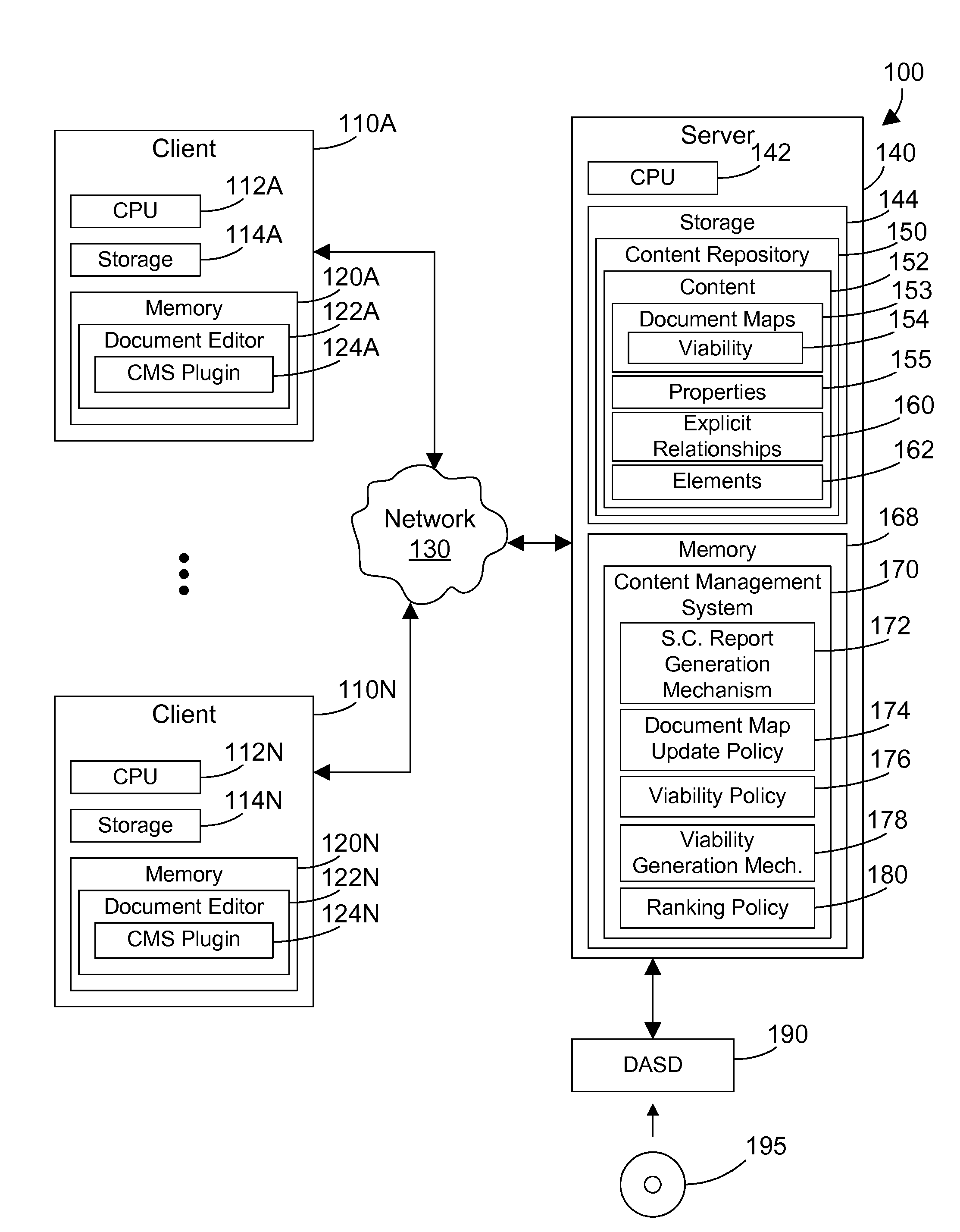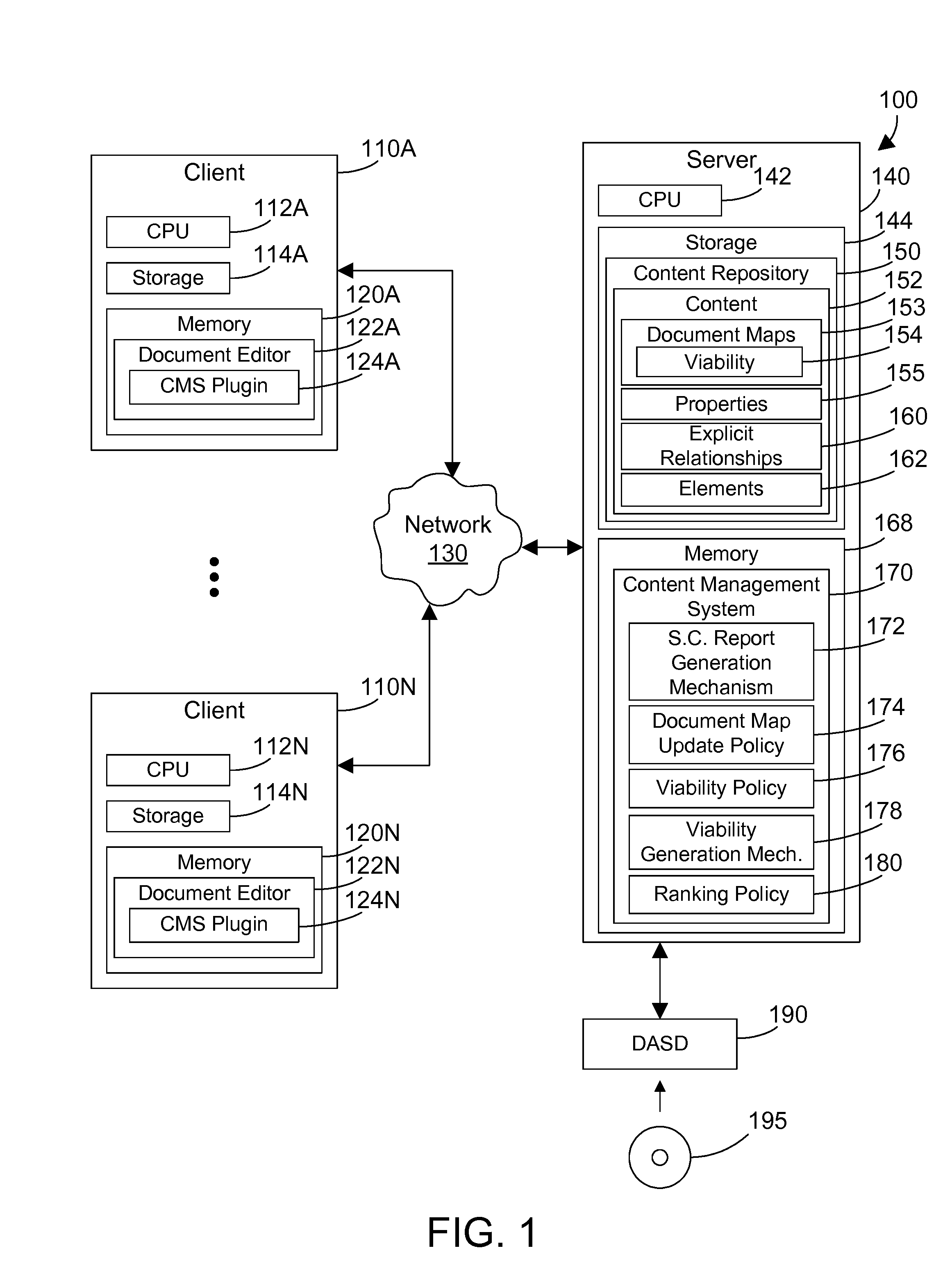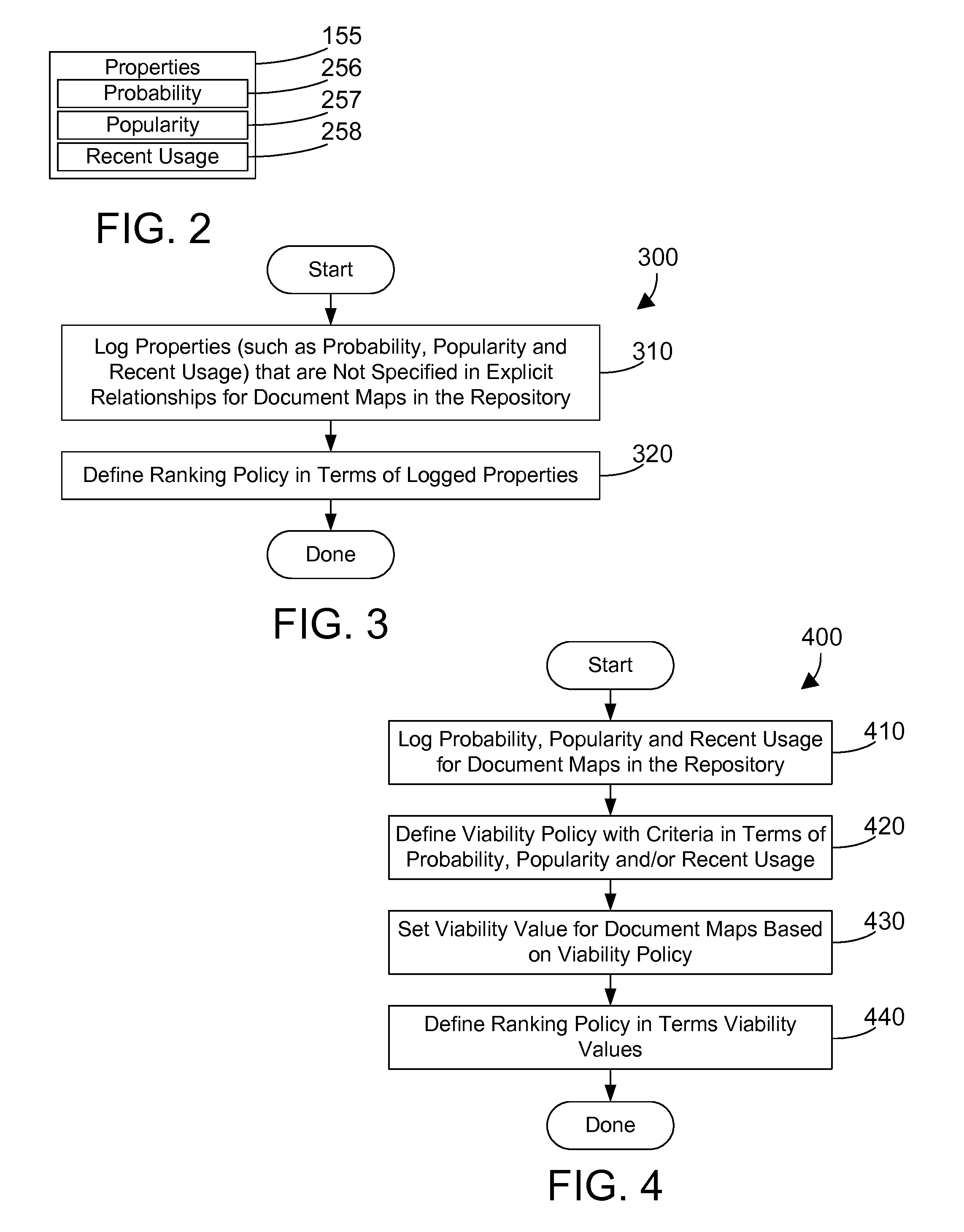Generating Simulated Containment Reports of Dynamically Assembled Components in a Content Management System
a content management system and dynamically assembled technology, applied in the field of content management systems, can solve the problems of inability to create documents, inability to fully utilize dynamic content delivery in the content management system, and inability to achieve reference integrity
- Summary
- Abstract
- Description
- Claims
- Application Information
AI Technical Summary
Problems solved by technology
Method used
Image
Examples
Embodiment Construction
[0033]Many known content management systems use extensible markup language (XML) due to its flexibility and power in managing diverse and different types of content. One known content management system that uses XML is Solution for Compliance in a Regulated Environment (SCORE) developed by IBM Corporation. XML is growing in popularity, and is quickly becoming the preferred format for authoring and publishing. While the disclosure herein discusses XML documents as one possible example of content that may be managed by a content management system, the disclosure and claims herein expressly extend to content management systems that do not use XML.
[0034]Referring to FIG. 1, networked computer system 100 includes multiple clients, shown in FIG. 1 as clients 110A, . . . , 110N, coupled to a network 130. Each client preferably includes a CPU, storage, and memory that contains a document editor, and a content management system (CMS) plugin. Thus, client 110A includes a CPU 112A, storage 114...
PUM
 Login to View More
Login to View More Abstract
Description
Claims
Application Information
 Login to View More
Login to View More - R&D
- Intellectual Property
- Life Sciences
- Materials
- Tech Scout
- Unparalleled Data Quality
- Higher Quality Content
- 60% Fewer Hallucinations
Browse by: Latest US Patents, China's latest patents, Technical Efficacy Thesaurus, Application Domain, Technology Topic, Popular Technical Reports.
© 2025 PatSnap. All rights reserved.Legal|Privacy policy|Modern Slavery Act Transparency Statement|Sitemap|About US| Contact US: help@patsnap.com



